Plantar Calcaneal Spur Treatment: Causes, Symptoms, Treatments, and Surgery
What are the causes of heel spurs. What are the symptoms of heel spurs. What are the non-surgical treatments for heel spurs. What is the surgery for heel spurs. How can heel spurs be prevented.
Causes of Heel Spurs
Heel spurs are caused by a calcium deposit that leads to a bony protrusion on the underside of the heel bone. This process usually occurs over many months and is often caused by strains on the foot muscles and ligaments, stretching of the plantar fascia, and repeated tearing of the membrane covering the heel bone. Heel spurs are especially common among athletes who participate in activities with large amounts of running and jumping.
Risk Factors for Heel Spurs
Certain factors can increase the risk of developing heel spurs, including walking gait abnormalities, running or jogging on hard surfaces, poorly fitted or worn shoes, excess weight and obesity, increasing age, diabetes, and spending most of the day on one’s feet.

Symptoms of Heel Spurs
Many people with heel spurs experience no symptoms at all. However, heel spurs can be associated with intermittent or chronic pain, especially while walking, jogging, or running, if inflammation develops at the point of spur formation. The pain is often described as a knife or pin sticking into the bottom of the foot, especially when first standing up in the morning.
Non-Surgical Treatments for Heel Spurs
Most people with heel spurs can find relief through conservative, non-surgical treatments, including stretching exercises, shoe recommendations, taping or strapping, shoe inserts or orthotic devices, physical therapy, and night splints. Over-the-counter medications like acetaminophen, ibuprofen, or naproxen can also help alleviate the pain.
Surgical Treatment for Heel Spurs
If conservative treatments fail to relieve symptoms after 9-12 months, surgery may be necessary. Surgical techniques include release of the plantar fascia and removal of the spur. Pre-surgical tests and post-surgical recommendations are important to ensure a successful outcome and minimize complications, which can include nerve pain, recurrent heel pain, numbness, infection, and scarring.

Prevention of Heel Spurs
Heel spurs can be prevented by wearing well-fitting shoes with shock-absorbent soles, rigid shanks, and supportive heel counters, as well as choosing appropriate shoes for each physical activity. Maintaining a healthy weight and managing any underlying conditions, such as diabetes, can also help reduce the risk of developing heel spurs.
What are the main causes of heel spurs?
The main causes of heel spurs are calcium deposits that build up on the underside of the heel bone, often due to strains on the foot muscles and ligaments, stretching of the plantar fascia, and repeated tearing of the membrane covering the heel bone.
What are the common symptoms of heel spurs?
Many people with heel spurs experience no symptoms, but the condition can be associated with intermittent or chronic pain, especially when walking, jogging, or running. The pain is often described as a knife or pin sticking into the bottom of the foot, especially when first standing up in the morning.

What are the non-surgical treatments for heel spurs?
Non-surgical treatments for heel spurs include stretching exercises, shoe recommendations, taping or strapping, shoe inserts or orthotic devices, physical therapy, night splints, and over-the-counter medications like acetaminophen, ibuprofen, or naproxen.
What is the surgical treatment for heel spurs?
If conservative treatments fail to relieve symptoms after 9-12 months, surgery may be necessary. Surgical techniques include release of the plantar fascia and removal of the spur. Pre-surgical tests and post-surgical recommendations are important to ensure a successful outcome and minimize complications.
How can heel spurs be prevented?
Heel spurs can be prevented by wearing well-fitting shoes with shock-absorbent soles, rigid shanks, and supportive heel counters, as well as choosing appropriate shoes for each physical activity. Maintaining a healthy weight and managing any underlying conditions, such as diabetes, can also help reduce the risk of developing heel spurs.

Heel Spur Causes, Symptoms, Treatments, and Surgery
Written by Rick Ansorge
Medically Reviewed by Jennifer Robinson, MD on August 28, 2022
- Causes of Heel Spurs
- Symptoms of Heel Spurs
- Non-Surgical Treatments for Heel Spurs
- Surgery for Heel Spurs
- Prevention of Heel Spurs
A heel spur is a calcium deposit causing a bony protrusion on the underside of the heel bone. On an X-ray, a heel spur can extend forward by as much as a half-inch. Without visible X-ray evidence, the condition is sometimes known as “heel spur syndrome.”
Although heel spurs are often painless, they can cause heel pain. They are frequently associated with plantar fasciitis, a painful inflammation of the fibrous band of connective tissue (plantar fascia) that runs along the bottom of the foot and connects the heel bone to the ball of the foot.
Treatments for heel spurs and associated conditions include exercise, custom-made orthotics, anti-inflammatory medications, and cortisone injections. If conservative treatments fail, surgery may be necessary.
If conservative treatments fail, surgery may be necessary.
Heel spurs occur when calcium deposits build up on the underside of the heel bone, a process that usually occurs over a period of many months. Heel spurs are often caused by strains on foot muscles and ligaments, stretching of the plantar fascia, and repeated tearing of the membrane that covers the heel bone. Heel spurs are especially common among athletes whose activities include large amounts of running and jumping.
Risk factors for heel spurs include:
- Walking gait abnormalities, which place excessive stress on the heel bone, ligaments, and nerves near the heel
- Running or jogging, especially on hard surfaces
- Poorly fitted or badly worn shoes, especially those lacking appropriate arch support
- Excess weight and obesity
Other risk factors associated with plantar fasciitis include:
- Increasing age, which decreases plantar fascia flexibility and thins the heel’s protective fat pad
- Diabetes
- Spending most of the day on one’s feet
- Frequent short bursts of physical activity
- Having either flat feet or high arches
Heel spurs often cause no symptoms.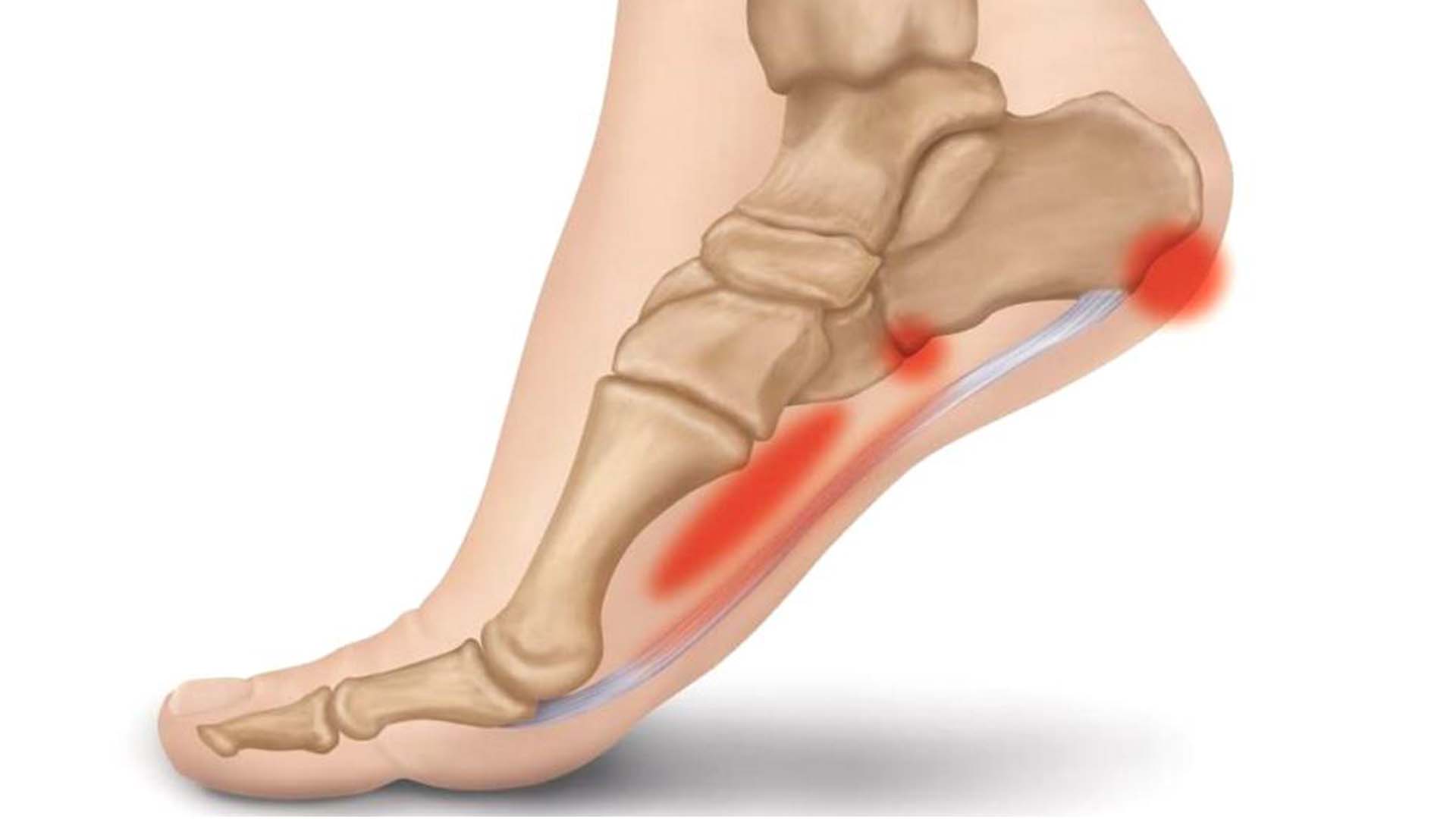 But heel spurs can be associated with intermittent or chronic pain — especially while walking, jogging, or running — if inflammation develops at the point of the spur formation. In general, the cause of the pain is not the heel spur itself but the soft-tissue injury associated with it.
But heel spurs can be associated with intermittent or chronic pain — especially while walking, jogging, or running — if inflammation develops at the point of the spur formation. In general, the cause of the pain is not the heel spur itself but the soft-tissue injury associated with it.
Many people describe the pain of heel spurs and plantar fasciitis as a knife or pin sticking into the bottom of their feet when they first stand up in the morning — a pain that later turns into a dull ache. They often complain that the sharp pain returns after they stand up after sitting for a prolonged period of time.
The heel pain associated with heel spurs and plantar fasciitis may not respond well to rest. If you walk after a night’s sleep, the pain may feel worse as the plantar fascia suddenly elongates, which stretches and pulls on the heel. The pain often decreases the more you walk. But you may feel a recurrence of pain after either prolonged rest or extensive walking.
If you have heel pain that persists for more than one month, consult a health care provider.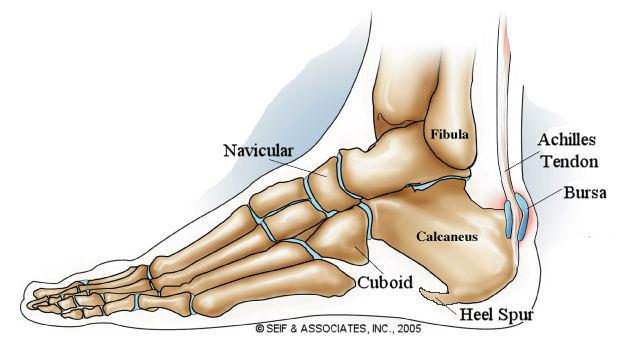 They may recommend conservative treatments such as:
They may recommend conservative treatments such as:
- Stretching exercises
- Shoe recommendations
- Taping or strapping to rest stressed muscles and tendons
- Shoe inserts or orthotic devices
- Physical therapy
- Night splints
Heel pain may respond to treatment with over-the-counter medications such as acetaminophen (Tylenol), ibuprofen (Advil), or naproxen (Aleve). In many cases, a functional orthotic device can correct the causes of heel and arch pain such as biomechanical imbalances. In some cases, injection with a corticosteroid may be done to relieve inflammation in the area.
More than 90 percent of people get better with nonsurgical treatments. If conservative treatment fails to treat symptoms of heel spurs after a period of 9 to 12 months, surgery may be necessary to relieve pain and restore mobility. Surgical techniques include:
- Release of the plantar fascia
- Removal of a spur
Pre-surgical tests or exams are required to identify optimal candidates, and it’s important to observe post-surgical recommendations concerning rest, ice, compression, elevation of the foot, and when to place weight on the operated foot. In some cases, it may be necessary for patients to use bandages, splints, casts, surgical shoes, crutches, or canes after surgery. Possible complications of heel surgery include nerve pain, recurrent heel pain, permanent numbness of the area, infection, and scarring. In addition, with plantar fascia release, there is risk of instability, foot cramps, stress fracture, and tendinitis.
In some cases, it may be necessary for patients to use bandages, splints, casts, surgical shoes, crutches, or canes after surgery. Possible complications of heel surgery include nerve pain, recurrent heel pain, permanent numbness of the area, infection, and scarring. In addition, with plantar fascia release, there is risk of instability, foot cramps, stress fracture, and tendinitis.
You can prevent heel spurs by wearing well-fitting shoes with shock-absorbent soles, rigid shanks, and supportive heel counters; choosing appropriate shoes for each physical activity; warming up and doing stretching exercises before each activity; and pacing yourself during the activities.
Avoid wearing shoes with excessive wear on the heels and soles. If you are overweight, losing weight may also help prevent heel spurs.
Top Picks
Heel Spur Causes, Symptoms, Treatments, and Surgery
Written by Rick Ansorge
Medically Reviewed by Jennifer Robinson, MD on August 28, 2022
- Causes of Heel Spurs
- Symptoms of Heel Spurs
- Non-Surgical Treatments for Heel Spurs
- Surgery for Heel Spurs
- Prevention of Heel Spurs
A heel spur is a calcium deposit causing a bony protrusion on the underside of the heel bone.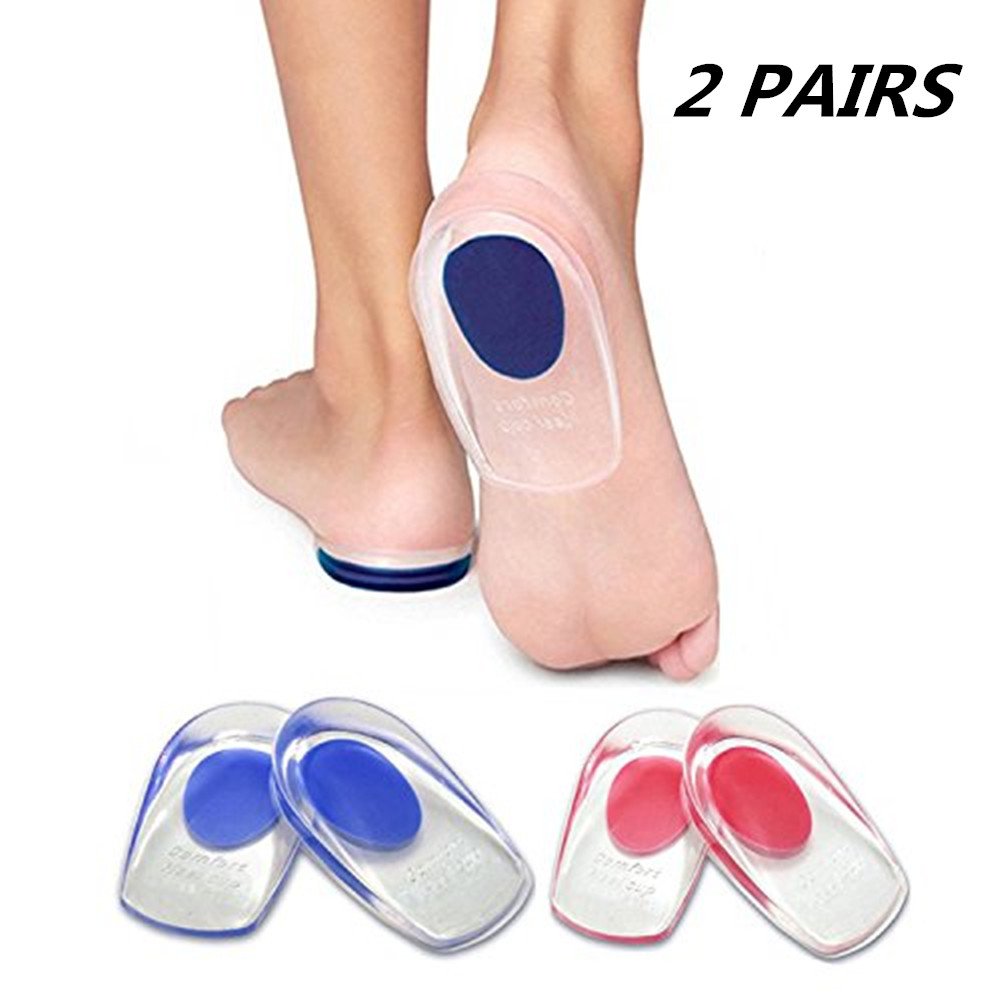 On an X-ray, a heel spur can extend forward by as much as a half-inch. Without visible X-ray evidence, the condition is sometimes known as “heel spur syndrome.”
On an X-ray, a heel spur can extend forward by as much as a half-inch. Without visible X-ray evidence, the condition is sometimes known as “heel spur syndrome.”
Although heel spurs are often painless, they can cause heel pain. They are frequently associated with plantar fasciitis, a painful inflammation of the fibrous band of connective tissue (plantar fascia) that runs along the bottom of the foot and connects the heel bone to the ball of the foot.
Treatments for heel spurs and associated conditions include exercise, custom-made orthotics, anti-inflammatory medications, and cortisone injections. If conservative treatments fail, surgery may be necessary.
Heel spurs occur when calcium deposits build up on the underside of the heel bone, a process that usually occurs over a period of many months. Heel spurs are often caused by strains on foot muscles and ligaments, stretching of the plantar fascia, and repeated tearing of the membrane that covers the heel bone. Heel spurs are especially common among athletes whose activities include large amounts of running and jumping.
Heel spurs are especially common among athletes whose activities include large amounts of running and jumping.
Risk factors for heel spurs include:
- Walking gait abnormalities, which place excessive stress on the heel bone, ligaments, and nerves near the heel
- Running or jogging, especially on hard surfaces
- Poorly fitted or badly worn shoes, especially those lacking appropriate arch support
- Excess weight and obesity
Other risk factors associated with plantar fasciitis include:
- Increasing age, which decreases plantar fascia flexibility and thins the heel’s protective fat pad
- Diabetes
- Spending most of the day on one’s feet
- Frequent short bursts of physical activity
- Having either flat feet or high arches
Heel spurs often cause no symptoms. But heel spurs can be associated with intermittent or chronic pain — especially while walking, jogging, or running — if inflammation develops at the point of the spur formation. In general, the cause of the pain is not the heel spur itself but the soft-tissue injury associated with it.
In general, the cause of the pain is not the heel spur itself but the soft-tissue injury associated with it.
Many people describe the pain of heel spurs and plantar fasciitis as a knife or pin sticking into the bottom of their feet when they first stand up in the morning — a pain that later turns into a dull ache. They often complain that the sharp pain returns after they stand up after sitting for a prolonged period of time.
The heel pain associated with heel spurs and plantar fasciitis may not respond well to rest. If you walk after a night’s sleep, the pain may feel worse as the plantar fascia suddenly elongates, which stretches and pulls on the heel. The pain often decreases the more you walk. But you may feel a recurrence of pain after either prolonged rest or extensive walking.
If you have heel pain that persists for more than one month, consult a health care provider. They may recommend conservative treatments such as:
- Stretching exercises
- Shoe recommendations
- Taping or strapping to rest stressed muscles and tendons
- Shoe inserts or orthotic devices
- Physical therapy
- Night splints
Heel pain may respond to treatment with over-the-counter medications such as acetaminophen (Tylenol), ibuprofen (Advil), or naproxen (Aleve). In many cases, a functional orthotic device can correct the causes of heel and arch pain such as biomechanical imbalances. In some cases, injection with a corticosteroid may be done to relieve inflammation in the area.
In many cases, a functional orthotic device can correct the causes of heel and arch pain such as biomechanical imbalances. In some cases, injection with a corticosteroid may be done to relieve inflammation in the area.
More than 90 percent of people get better with nonsurgical treatments. If conservative treatment fails to treat symptoms of heel spurs after a period of 9 to 12 months, surgery may be necessary to relieve pain and restore mobility. Surgical techniques include:
- Release of the plantar fascia
- Removal of a spur
Pre-surgical tests or exams are required to identify optimal candidates, and it’s important to observe post-surgical recommendations concerning rest, ice, compression, elevation of the foot, and when to place weight on the operated foot. In some cases, it may be necessary for patients to use bandages, splints, casts, surgical shoes, crutches, or canes after surgery. Possible complications of heel surgery include nerve pain, recurrent heel pain, permanent numbness of the area, infection, and scarring.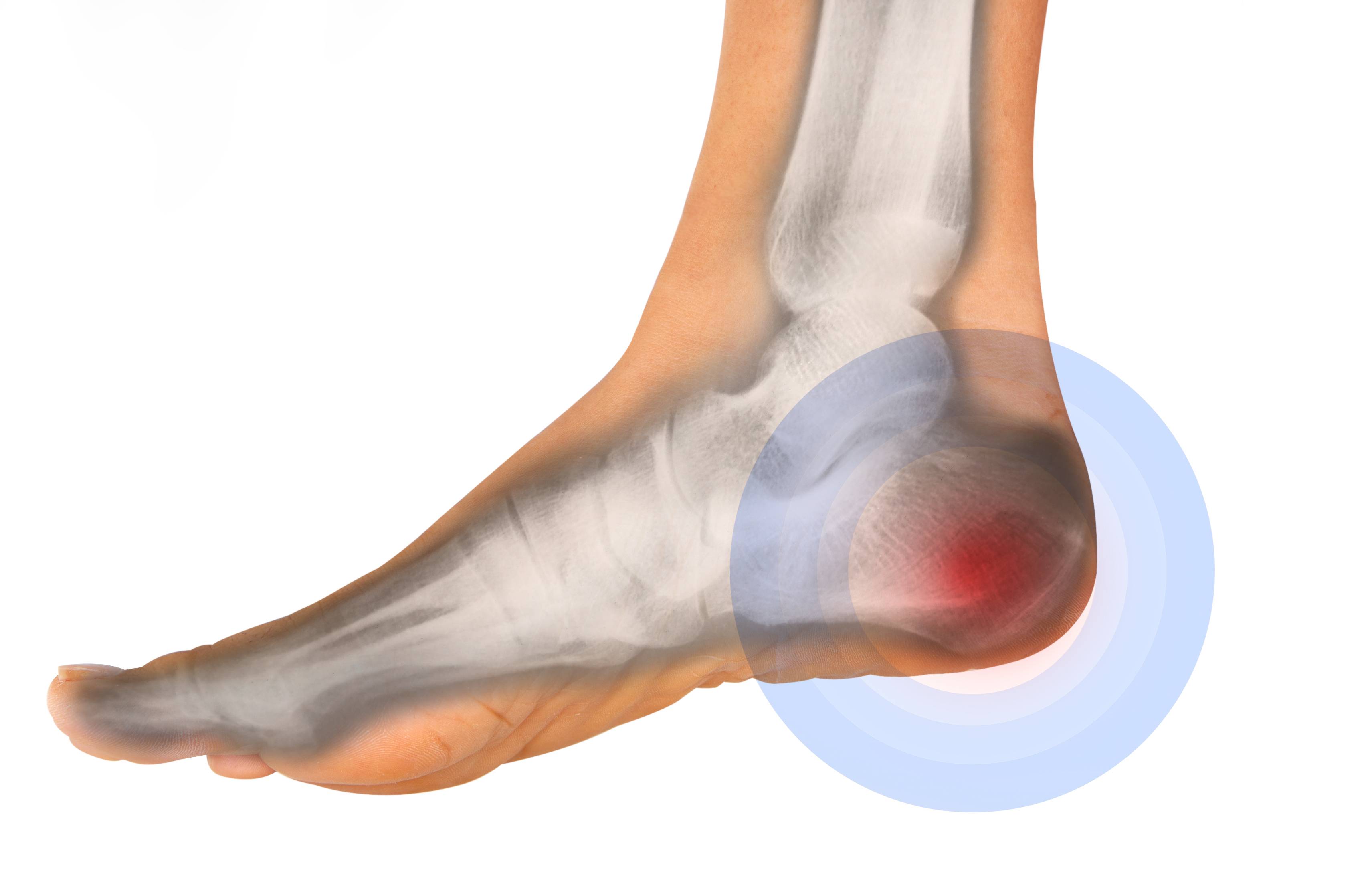 In addition, with plantar fascia release, there is risk of instability, foot cramps, stress fracture, and tendinitis.
In addition, with plantar fascia release, there is risk of instability, foot cramps, stress fracture, and tendinitis.
You can prevent heel spurs by wearing well-fitting shoes with shock-absorbent soles, rigid shanks, and supportive heel counters; choosing appropriate shoes for each physical activity; warming up and doing stretching exercises before each activity; and pacing yourself during the activities.
Avoid wearing shoes with excessive wear on the heels and soles. If you are overweight, losing weight may also help prevent heel spurs.
Top Picks
Heel spur – treatment, symptoms, causes, diagnosis
Video
- Heel spur.
 Question answer.
Question answer.
Subject: Q&A - Heel spur
Subject: Encyclopedia of diseases
Title
- Causes of disease
- Symptoms
- Diagnostics
- Treatments for heel spurs
SHOCK WAVE THERAPY –
the most effective treatment for
HEAL SPUR!
Read more
Heel spur is a calcium deposit on the bottom of the heel bone. On x-ray, the heel spur may protrude 0.5-1 cm forward. Although heel spurs are often painless, they can still be quite painful. Heel spurs are often associated with plantar fasciitis. Plantar fasciitis is the most common cause of pain in the bottom of the heel. Approximately 2 million patients in the US are treated for plantar fasciitis each year. Plantar fasciitis occurs when the strong band of tissue that supports the arch of the foot (plantar fascia) becomes irritated and inflamed. Heel spurs on the back of the heel are also often associated with inflammation of the Achilles tendon (tendinitis) and can cause soreness and pain in the back of the heel that worsens with foot extension.
Heel spurs on the back of the heel are also often associated with inflammation of the Achilles tendon (tendinitis) and can cause soreness and pain in the back of the heel that worsens with foot extension.
Heel spurs and plantar fasciitis can occur by themselves or be caused by the presence of diseases such as arthritis (including Reiter’s reactive arthritis), ankylosing spondylitis, diffuse idiopathic hyperostosis. It is important to note that a heel spur may not cause any symptoms at all, and may be discovered incidentally during an X-ray examination.
Cause
A heel spur occurs when calcium deposits form on the bottom of the heel bone and this is a process that usually occurs over many months. Heel spurs are often caused by stretching of the muscles and ligaments, stretching of the plantar fascia, and repeated ruptures of the membrane that covers the heel bone. Heel spurs are especially common in athletes whose sports activities are associated with a lot of jumping and running.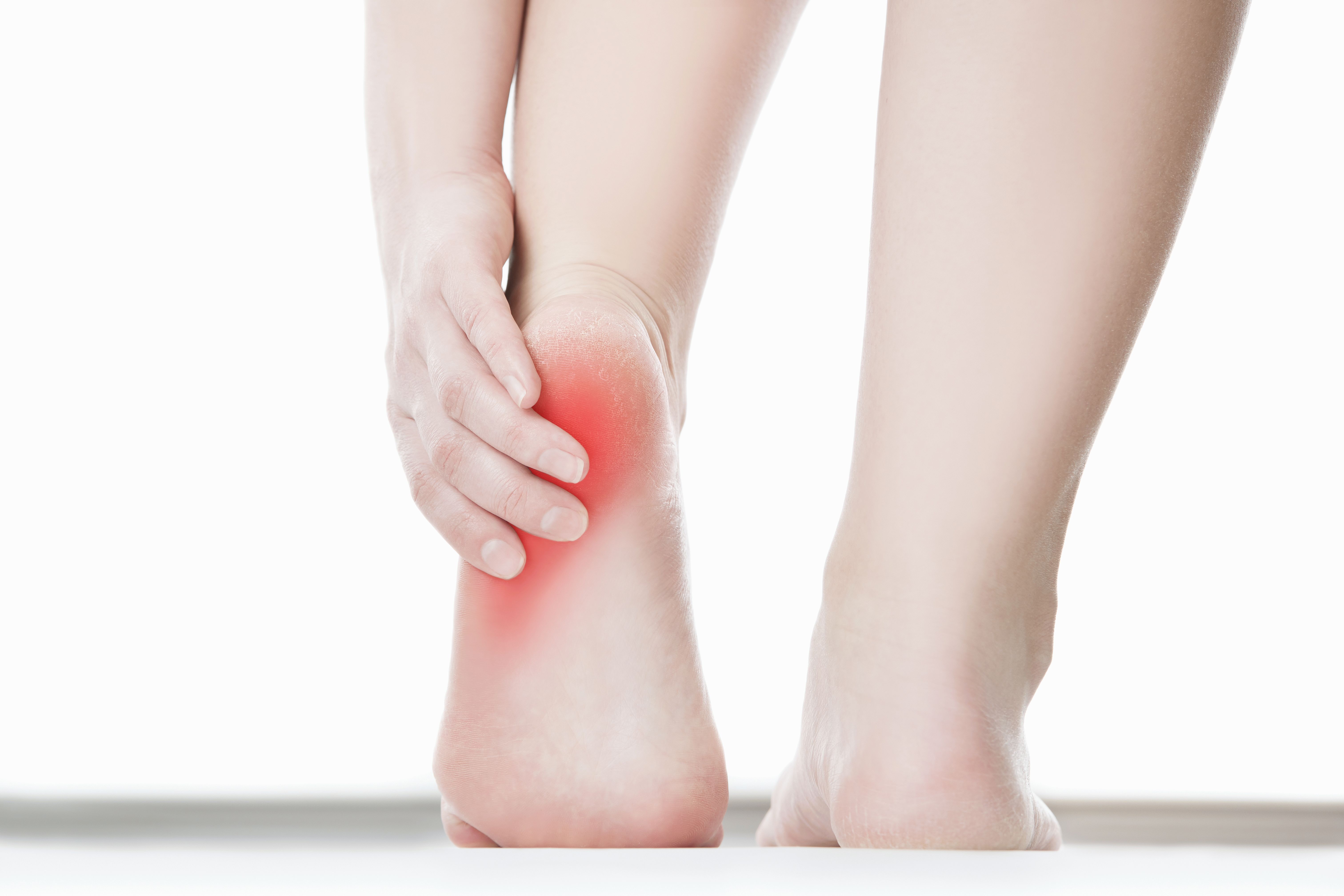
Risk factors for heel spurs include:
- Impaired gait that places excessive stress on the heel bone, ligaments, and nerves in the heel area.
- Running on hard surfaces
- Poorly fitted or worn shoes
- Overweight, obesity
In most cases, plantar fasciitis develops without a specific cause.
But there are certain risk factors that increase the chance of developing plantar fasciitis and include:
- Old age. Involutional changes in the tissues leads to a decrease in the elasticity of the plantar fascia and a decrease in adipose tissue in the heel area
- Diabetes
- Activity involving standing for long periods of time
- Episodes of vigorous physical activity
- The presence of flat feet or vice versa high arch of the foot.
- Gastrocnemius tightness and limited foot flexion.
The function of the plantar fascia is to absorb the loads that fall on the foot.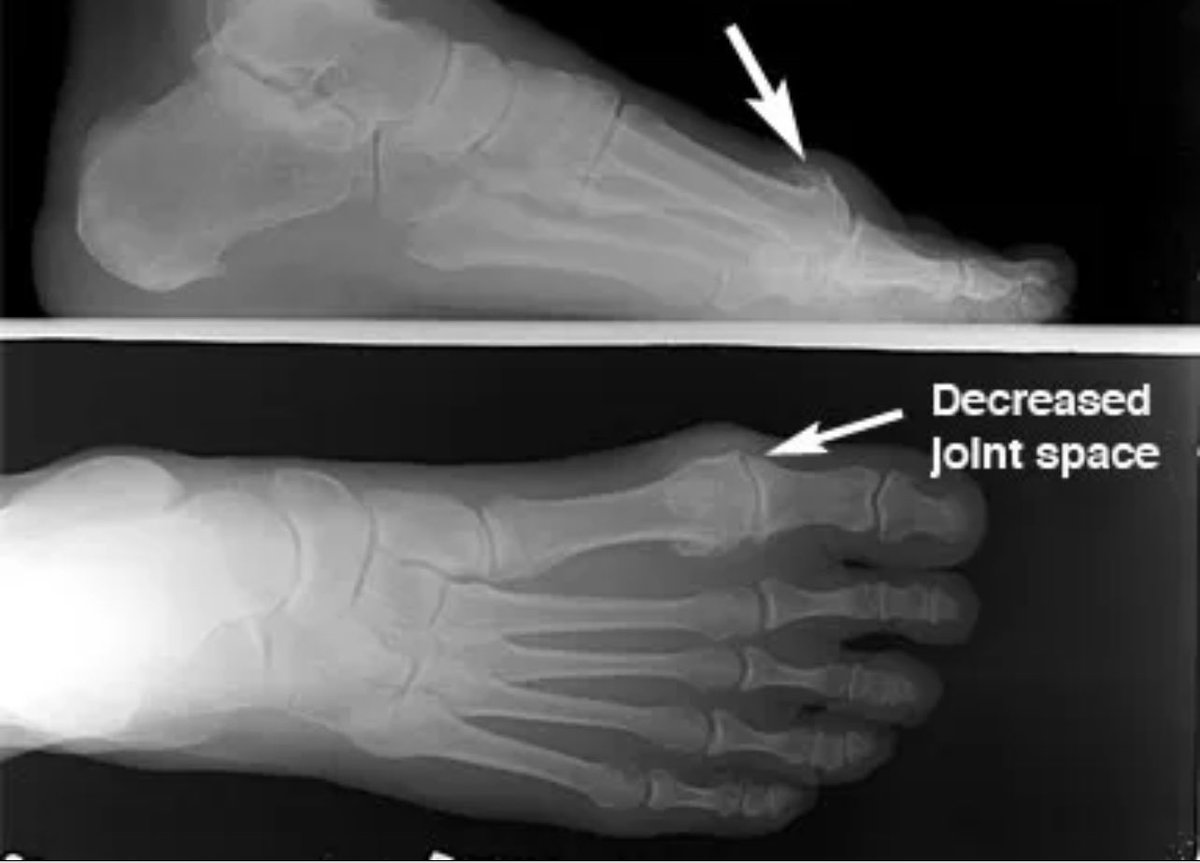 But at a certain point, the fascia cannot withstand the loads, and tears and inflammation of the fascia occur.
But at a certain point, the fascia cannot withstand the loads, and tears and inflammation of the fascia occur.
Symptoms
Although many patients with plantar fasciitis have a heel spur, the spur does not always cause pain. Almost 10% of adults have spurs, but only 5% have foot pain. And therefore, the treatment of heel pain, most often, does not require the removal of the spur.
The most common symptoms of plantar fasciitis are:
- Pain in the lower part of the foot near the heel
- Pain on first steps after getting out of bed in the morning, or after a long period of rest, such as after a long car ride. Pain lessens after a few minutes of walking
- Increased pain after (not during) exercise or physical activity.
Heel spurs often cause no symptoms. But heel spurs can lead to occasional pain or chronic pain – especially when walking or jogging if inflammation develops at the site of the spur. In general, the cause of the pain is not the heel spur itself, but trauma to the soft tissues of this spur.
Many patients describe pain with heel spur and plantar fasciitis, like a pin sticking out of the bottom of the foot when they get up in the morning and this pain later becomes a dull ache. Also characteristic is the complaint that acute pain also appears immediately when standing up, after sitting for a long period of time
Diagnosis
After studying the medical history, the patient’s complaints, the doctor examines the leg: the presence of a high arch, the area of pain in the heel area, the presence of mobility restrictions in the foot. To verify the diagnosis, instrumental methods of research may be required. Radiography provides a clear image of bone tissue. This research method makes it possible to exclude other causes of heel pain, such as a fracture or arthrosis. The heel spur is well visualized on x-ray.
MRI is a very informative research method that allows you to visualize well not only the bone tissues of the foot, but also soft tissues (ligaments, cartilage), which is important in diagnosing damage to the plantar fascia, Achilles tendon or cartilage tissue damage in arthritis.
Ultrasound examination is also widely used for diagnosing heel spurs and plantar fasciitis and, although it is inferior to MRI in image quality, but given the complete safety, it can be used quite often, for example, to monitor the effectiveness of treatment.
Treatment
Heel spur treatment can be conservative or surgical. In 90% of patients with plantar fasciitis (heel spur), conservative treatment is effective within 10 months.
Conservative methods of treatment include:
Drug treatment includes the use of drugs of the NSAID group (ibuprofen, voltaren, naproxen), which can be used both orally in the form of tablets and topically, in the form of ointments, gels containing NSAIDs. In some cases, it is possible to use injections of corticosteroids, which allows you to quickly remove the inflammatory process. A corticosteroid may be injected into the plantar fascia to reduce inflammation and pain. But repeated steroid injections can lead to rupture of the fascia, and therefore the use of steroids must be clearly indicated.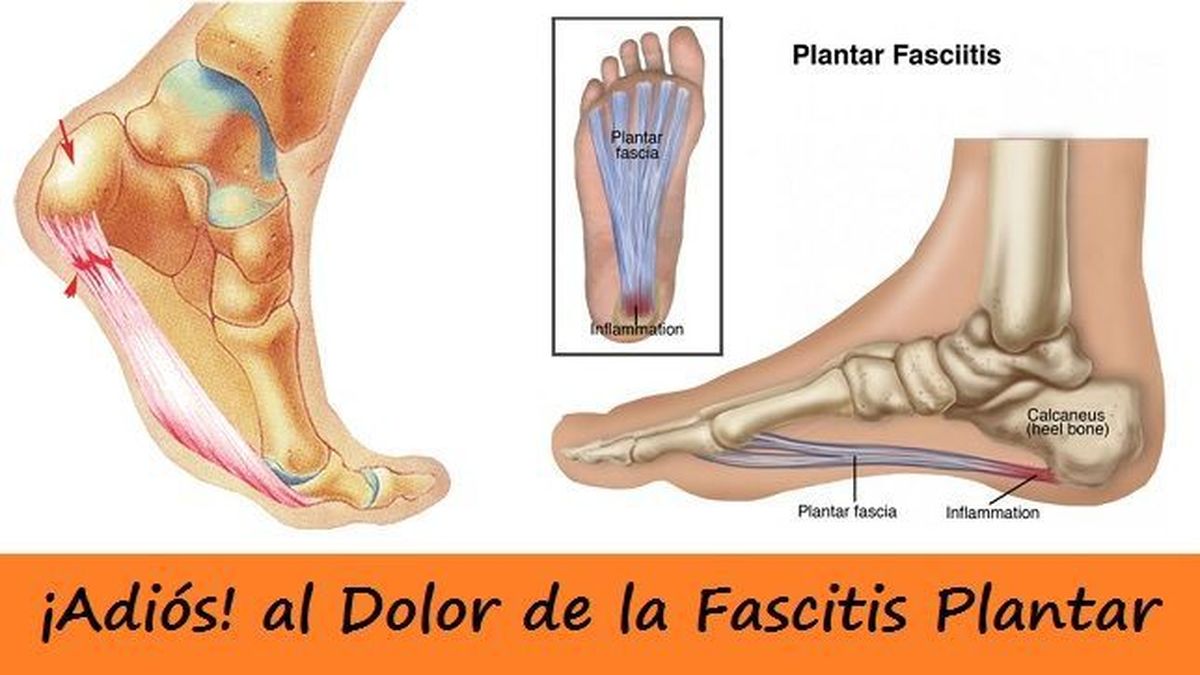
Extracorporeal shock wave therapy (ESWT). During this treatment, powerful sound wave pulses break up the calcium deposits in the heel spur and stimulate the regeneration process in the plantar fascia.
The SWT procedure in some cases helps to avoid surgical treatment.
Physiotherapy (laser therapy, electrophoresis, cryotherapy) can significantly reduce inflammation in the plantar fascia and reduce pain.
Orthopedic products . There are various products that can reduce the load on the foot, especially effective heel pads made of silicone, which significantly reduce the load on the calcaneus and plantar fascia.
LFK . Exercises aimed at strengthening the muscles of the foot are quite effective in the treatment of heel spurs and plantar fasciitis in combination with other methods of treatment.
Surgical treatments are used only if there is no effect of conservative treatment within 12 months.
Heel spur: symptoms and treatment
Traumatologist-orthopedist
Shelepov
Alexander Sergeevich
Experience 14 years
Traumatologist-orthopedist
Make an appointment
A heel spur, also known as plantar fasciitis, is a disease associated with inflammation of the tendons, ligaments, and muscles that are located in the heel area. Due to the inflammatory process, growths begin to form on the heel bone. As they grow, these growths dig into soft tissues, causing pain and severe discomfort when walking or standing still with support on the heel.
Interestingly, not all people experience similar symptoms even if they have a heel spur. Very often it is discovered suddenly – by doing an x-ray for some other reason.
Risk groups
Most often, this problem affects women (probably due to wearing shoes with heels). Their percentage of all patients is 80%. The main age of the sick is more than forty years old, but such a problem can also be encountered at a younger age.
Symptoms
The main symptom of a heel spur is severe pain that reduces a person’s quality of life. Moreover, it is not necessary that, simultaneously with pain, a person will observe swelling or redness on the heel (although they may be present). If there is redness, then with your hands you can feel that this area of \u200b\u200bthe skin is warmer than the rest, which is associated with the development of inflammation.
Most often, the pain experienced by patients can be compared to the feeling of a nail in the heel. It is most strongly felt when a person steps on his foot for the first few times after a long rest or sleep. Then the leg gets used a little, the pain becomes a little less, and in the evening, due to the tortured condition, it starts to hurt more strongly again.
The symptoms of heel spurs develop in different ways. For someone, they appear unexpectedly – just one morning a person gets out of bed and experiences terrible pain. In other patients, the situation is different: manifestations occur periodically, there may be periods of calm. In this case, the signs of a heel spur indicate that the process has become chronic.
In other patients, the situation is different: manifestations occur periodically, there may be periods of calm. In this case, the signs of a heel spur indicate that the process has become chronic.
As a rule, trying to avoid pain and discomfort, a person begins to take care of the heel and not step on it once again. Because of this, the gait changes greatly, walking becomes uncomfortable. A heel spur usually appears on one foot, but in rare cases it can develop on both at the same time.
Reasons
Causes of heel spurs include:
- Injuries. Basically, such growths begin to form after jumping from a great height, when the heel and surrounding tissues are damaged upon landing, and therefore inflammation begins.
- Flat feet. This reason is due to the fact that the load on the foot is distributed incorrectly. As a result, the heel experiences more load than in the correct position.
- Various joint diseases (eg rheumatoid arthritis) and sprains.

- Overload of the foot area due to external influence. A very common situation is the wrong choice of shoes. And the problem is not only in heels – for example, tight ballet flats and shoes with very thin soles are also undesirable for the heel. Foot overload is often associated with work, if a person stands or walks all day.
- Gout. With this disease, excessive deposition of salts occurs, which affects all joints and bones.
- Diseases associated with circulatory disorders, such as diabetes mellitus.
- STI. Chlamydia, gonorrhea and other infections affect the condition of the joints, and therefore, over time, a heel spur may develop.
- Natural changes in the body that are associated with age. Again, as the body ages, tissues become less healthy and less able to perform natural tasks, so bone growths are quite common.
It is not always possible to establish the causes of the problem for sure – often they are detected during other examinations or do not matter right now for the treatment of the disease.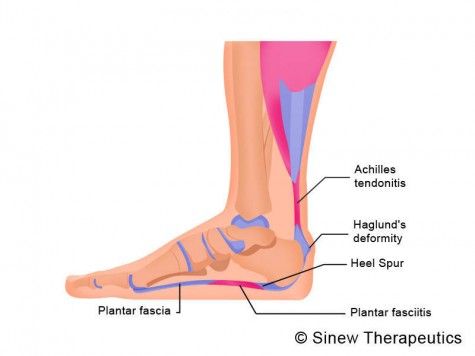
Diagnostics
To make a diagnosis, you need to contact an orthopedist, orthopedic surgeon or therapist, if it is not possible to immediately get to the specialists of the listed specialties.
The doctor interviews the patient, examines and palpates the heel, and also prescribes an x-ray. This is usually enough to accurately identify the problem and start working on it.
Treatment
There are different types of treatment for heel spurs:
- Medication. It is aimed at relieving inflammation and eliminating pain while walking.
- MBST therapy. It is used to relieve swelling, pain relief, improve vascular function.
- Laser therapy. It is used to stimulate tissues, reduce swelling, eliminate inflammation and also relieve pain.
- Phonophoresis. The method combines the possibilities of hormonal anti-inflammatory ointment and ultrasound. Under the influence of the latter, the active substance of the ointment penetrates into the heel more efficiently and relieves inflammation very efficiently.

- X-ray therapy. In the process of this method, the nerve endings near the heel spur are blocked – due to this, pain when walking decreases or disappears.
- Shock wave therapy. It allows you to make the growth resolve. This is a non-surgical effect, which in its effectiveness is often similar to surgery. True, a course of procedures is required to achieve results.
Not always all of the above methods work, and therefore there is one more option: the treatment of heel spurs with the help of surgical intervention. As a rule, 5% of patients require this option.
An important point of treatment is also a change in lifestyle and additional recommendations from doctors, for example:
- Wear special orthopedic insoles that reduce the load on the heel.
- Periodically do contrast foot baths and foot massage (strictly on the recommendation of the attending physician).
- Therapeutic exercises for heel spurs (special gymnastics).
 They are needed to maintain blood vessels and muscles in good condition. From ordinary sports, people with such an ailment are available for cycling and swimming. Also useful is gymnastics for the feet without stress on the heel.
They are needed to maintain blood vessels and muscles in good condition. From ordinary sports, people with such an ailment are available for cycling and swimming. Also useful is gymnastics for the feet without stress on the heel. - Diet to restore metabolism. As a rule, you need to concentrate on proper nutrition, eliminate excess salt and add enough pure water to the diet.
A lot has been written about the symptoms and treatment of heel spurs in various sources that promote folk, home treatment. As a rule, the proposed methods are useless and simply waste the patient’s time. In more serious cases, when it comes to compresses with aggressive solutions, you can even get burned.
Do not experiment with treatment – sign up at the JSC “Medicina” clinic in Moscow – our therapists and orthopedists are ready to offer you a real treatment after a thorough examination. A disease such as a heel spur can always be defeated with due attention and an integrated approach.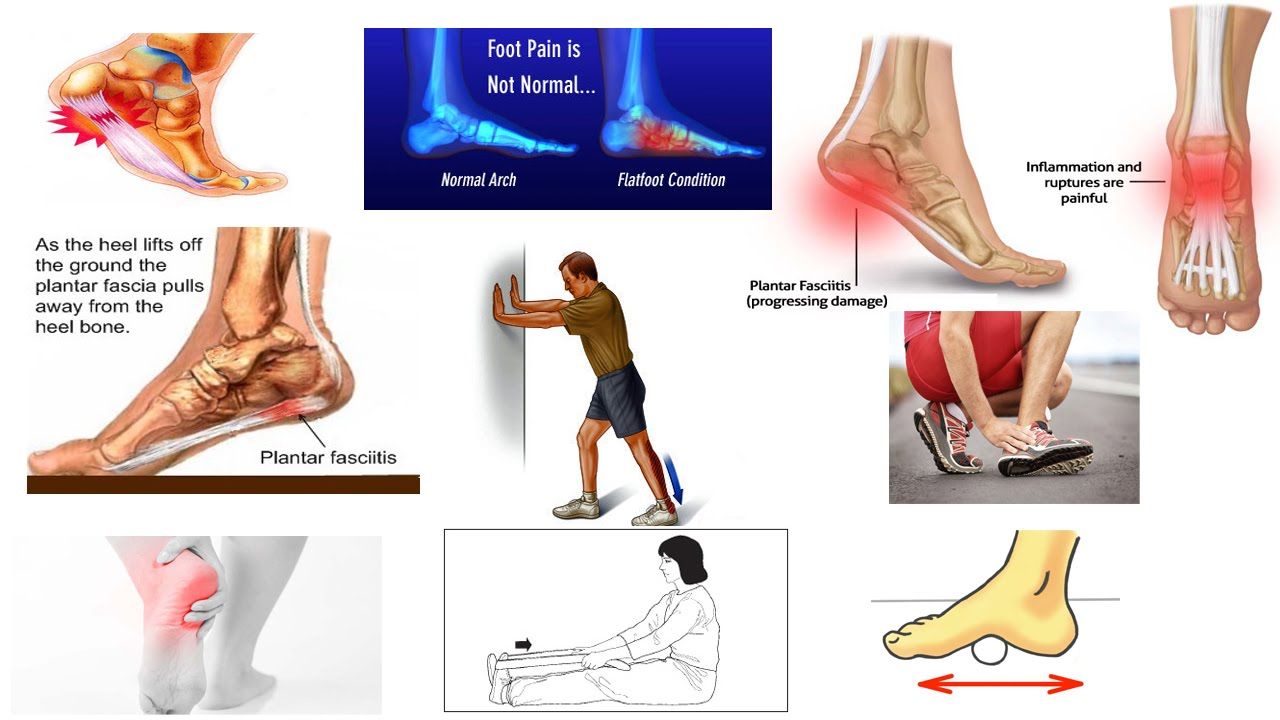
Prevention
Preventive measures in this case include the following:
- Timely treatment of all orthopedic diseases: diseases of the spinal column, flat feet, etc.
- Increased attention to the condition of the joints, prevention of their diseases.
- Choosing the right shoes – no high heels, with a stable last but not too flat.
- Supplementing shoes with special insoles, which are selected with the participation of an orthopedist.
- Moderate physical activity for the harmonious development of muscles, ligaments and joints.
- Exclusion of overloads of the foot and injuries of various nature (avoidance of dangerous situations).
- Regular foot exercises.
- Weight control. Excess kilograms put a serious strain on the heel area, which can contribute to the development of a spur.
- Proper nutrition with enough nutrients.
It is worth adhering to these recommendations already at a young age in order to eliminate the risks of developing the disease in the future or to push the first signs of a heel spur much further in time.

 Question answer.
Question answer. 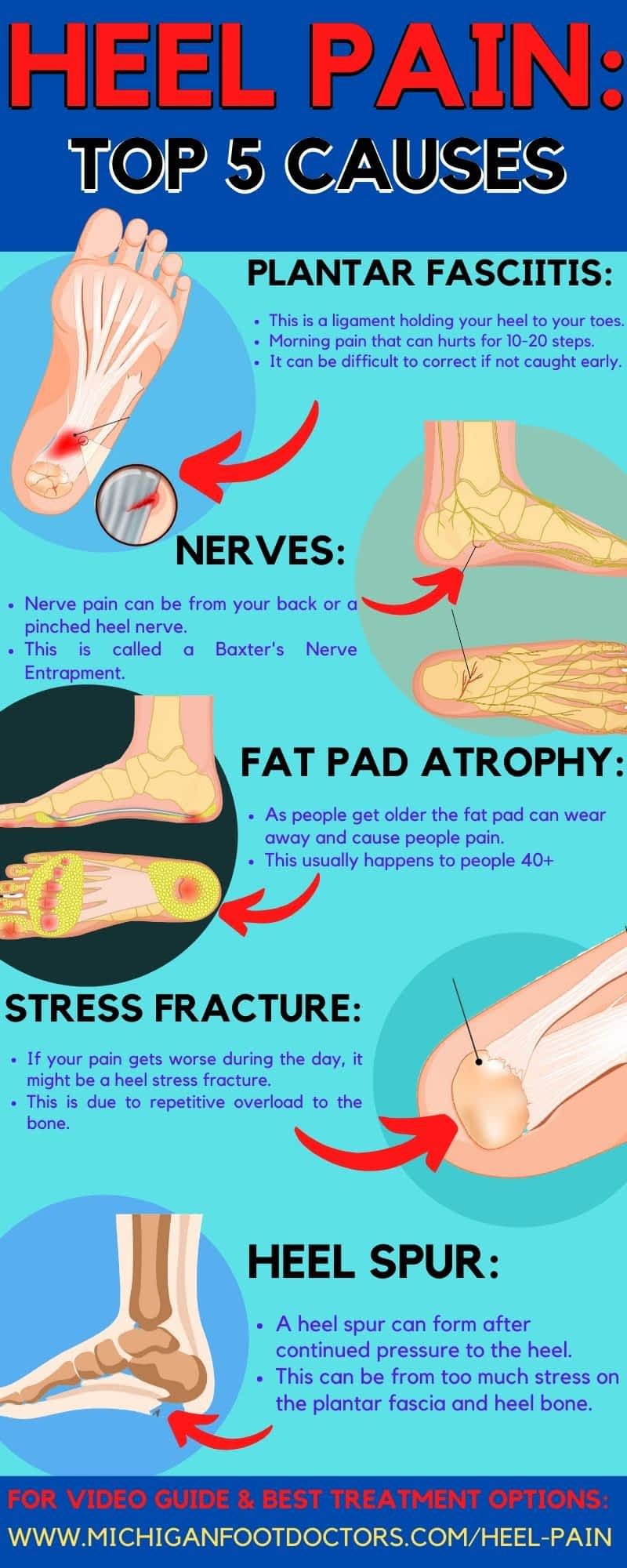
 They are needed to maintain blood vessels and muscles in good condition. From ordinary sports, people with such an ailment are available for cycling and swimming. Also useful is gymnastics for the feet without stress on the heel.
They are needed to maintain blood vessels and muscles in good condition. From ordinary sports, people with such an ailment are available for cycling and swimming. Also useful is gymnastics for the feet without stress on the heel.